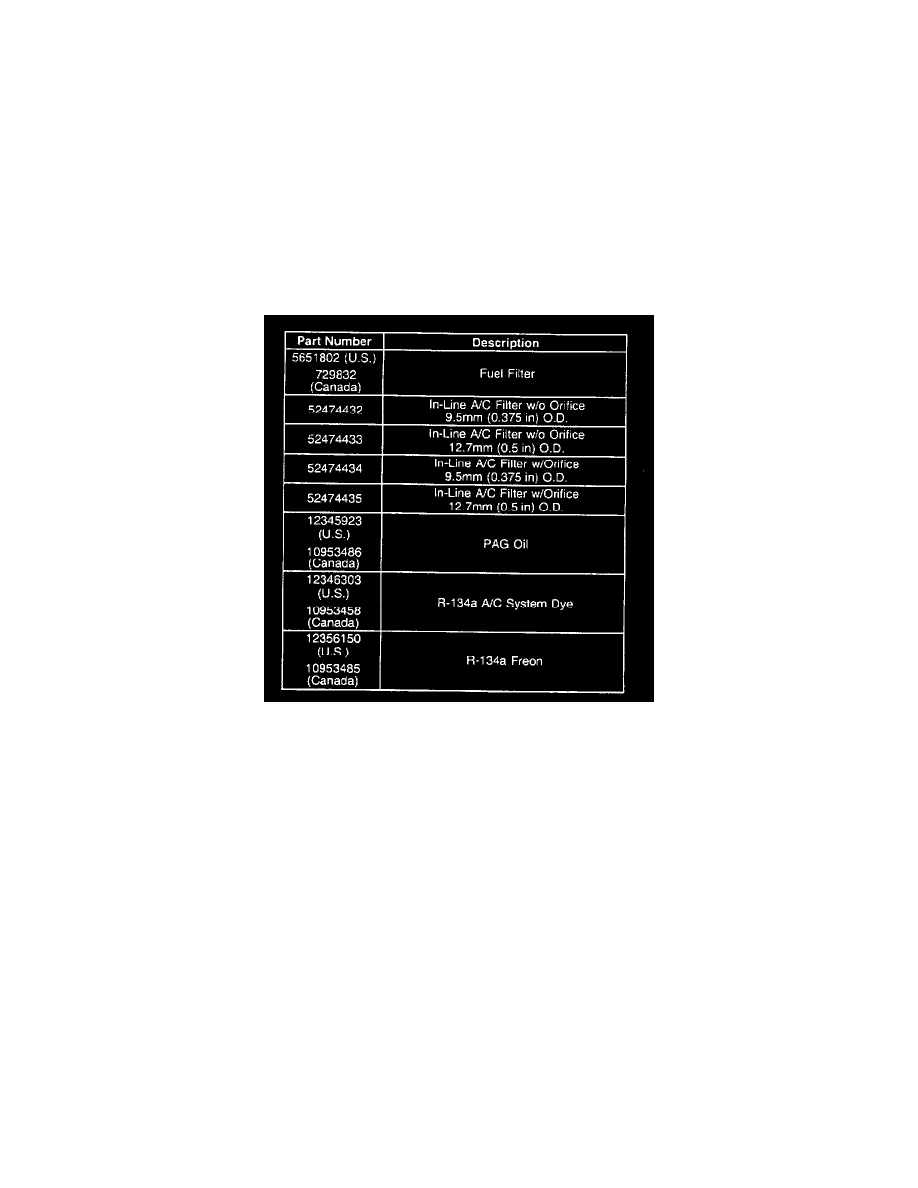S15/T15 Sonoma P/U 2WD L4-2.2L VIN 4 (1995)

Refrigerant: Service and Repair
Proper Flushing Procedures
General Information
This article has been updated with bulletin No. 01-01-38-006A.
CONTAMINATED R-134A A/C SYSTEMS - AIR CONDITIONING SYSTEM FLUSHING PROCEDURES AND GUIDELINES
A/C system flushing should NOT be routinely performed when a system failure is encountered. System flushing takes a considerable amount of time to
perform and is NOT necessary on most system failures and should be performed only when any one of the following conditions is found.
-
Desiccant bag failure
-
Gross overcharge of PAG oil
-
Refrigerant contamination
-
Contaminated PAG oil
-
Catastrophic compressor failure causing oil contamination
A/C system flushing will remove some of the metal particles during a flush, but flushing is not completely effective in removing all metallic debris.
System flushing should not be considered if removal of metallic debris is the only objective. GM Service Operations continues to recommend the use
of LIQUID LINE FILTERS and SUCTION SCREENS to control this type of system contamination and avoid repeat failures.
A/C System Flushing Procedure
A/C SYSTEM FLUSHING PROCEDURE
TOOLS REQUIRED:
-
J 43600 ACR 2000
-
J 45263 Flush Adapter Kit
-
J 41447 Leak Detection Dye or equivalent
-
J 41459 Leak Detection Dye Injector or equivalent
-
J 42220 Universal 12V Leak Detection Lamp or equivalent
-
J 39400-A Leak Detector
-
J 44551 A/C Suction Screen Kit
A warm engine compartment or higher ambient temperatures speed the refrigerant recovery time during the A/C flush procedure. Whenever possible,
warm the engine prior to system flushing. The use of an external fan blowing across the condenser may also be helpful to speed recovery.
FRONT ONLY A/C SYSTEMS
1. Recover system refrigerant.
2. Remove the expansion device (orifice tube or TXV).
3. Connect the A/C lines with the orifice tube removed or install the appropriate TXV Adapter from kit J 45268.
4. Remove the A/C compressor.
